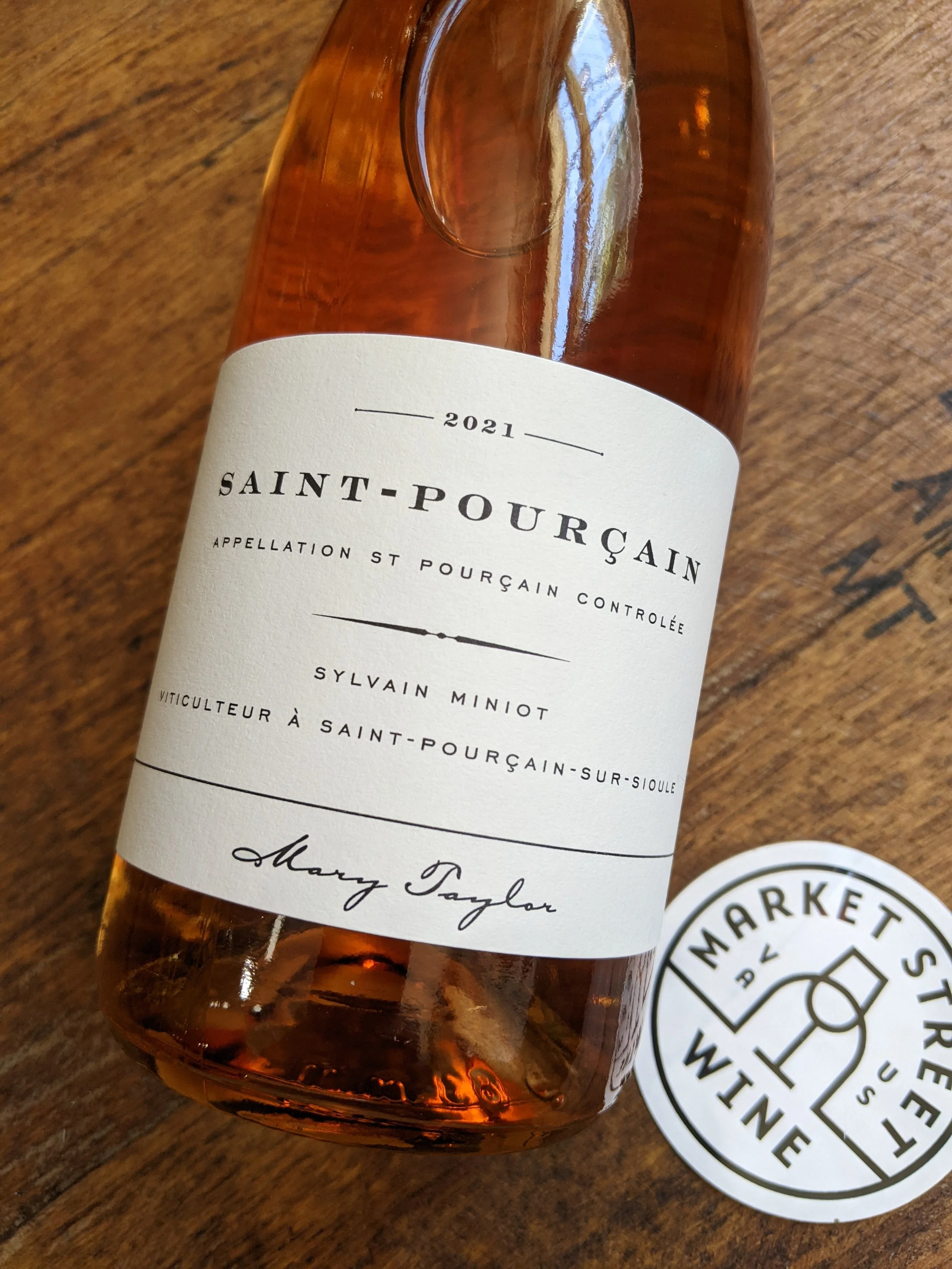Wine of the Week 07/10/24
Mary Taylor Saint-Pourçain Rosé
Normally $13.99 / Now on Sale for $10.96
100% Gamay (Saint-Pourçain AOC)
Mary Taylor wants to take you on her journey through European wine.
When Taylor first started selling French and Italian wines in the 1990s, she came to the Wine World the way many of us Americans do, from the grape perspective. “What’s the grape?” we say. “Chardonnay?” “Cab Sav?” “Pinot?” Because the grapes are chiefly responsible for what the wine tastes like, right?
However, as Euro-wine became a part of her everyday life, Taylor shifted her perspective to appreciate that what these wines were made of was not as important as where they were made — that it’s more significant that a wine comes from north of Lyon (Beaujolais AOC) or from around Tours (Touraine - Loire AOC) than it is that they’re both made of Gamay.
After years of living and working and drinking in Europe, Taylor started Mary Taylor Wine — a company that doesn’t have a home region or blocks of vineyards in a single appellation. Mary Taylor Wines works with different winemakers in different regions in France and Italy to make wines that express the unique character of their particular place and culture (their “terroir”). That focus leads us to this rosé.
Saint-Pourçain is a little-known appellation in central France. Technically part of the Loire AOC, it sits apart, southeast of the Loire’s four main regions, with three other small, unconnected appellations (Côtes d’Auvergne, Côte du Forez, and Côte Roannaise). Still following the Loire river, this appellation archipelago lies in the foothills of the Massif Central mountain range — the home of most of France’s volcanoes. What we usually think of as the Loire Valley does not. Thus, in 2020, a number of archipelago vintners asked that their region be known as “Loire Volcanique.” That name has yet to be officially recognized, but back to Saint-Pourçain …
Turns out that little Saint-Pourçain is one of the oldest grape growing regions in France, perhaps even pre-dating Roman involvement, going back to a Phoenician influence! Though, as we said, it’s part of the Loire AOC, it has more geographic proximity and similarity to neighboring Burgundy. So, no surprise, its grapes follow suit, with their dominant white grape being Chardonnay, and their dominant red grape being Gamay. (Can’t you just feel Mary Taylor Wines saying, “Oh, we absolutely have to do a wine here!” ?)
For their Saint-Pourçain Rosé, Mary Taylor turned to local winemaker Sylvain Miniot. He makes this rosé from 100% Saint-Pourçain Gamay aged in stainless steel, on lees, for five months. Warning! This is not your daddy’s Gamay! When you first crack it, it presents a zippy, almost bracing hibiscus flavor. However, it’s the perfect rosé for the “glass of wine a day” person, as you can watch it get softer as the days go on. If you can’t wait that long, though, we suggest speeding up the process by decanting it.

